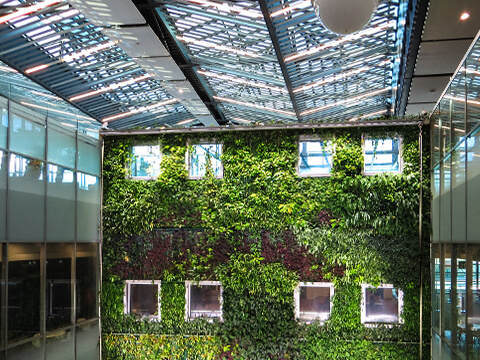Punch List
Following construction, a punch list is often created. A punch list is a document listing work and tasks that have not yet been completed. It usually consists of things that upon the first walkthrough were noticed to either be incomplete or incorrectly complete. These tasks are typically left for last because they do not fall under the purview of subcontractors. Completion of the punch list is most often the responsibility of the general contractor.
Punch lists are frequently separated by room or area, listing where and what needs to be done, as well as the type of work necessary. For example, a punch list may say Kitchen – Appliance – Check stove has gas and turns on, then have space to indicate whether the task is complete or needs further work. More detailed punch lists might include a column for the priority level, date inspected, and task due date. From small, residential structures to large complex commercial buildings, punch lists can be and are being employed to ensure quality and efficiency.
 Final Inspections
Final Inspections
Inspections occur before the creation of the punch list and after the completion of the punch list. The final inspection is a serious and thorough affair and is typically done by local building or health department officials. Residential building inspections differ from commercial building inspections despite essentially serving the same purpose: ensuring that the building or structure is safe and compliant with local building codes and regulations.
Commercial buildings are often more complex than residential buildings and therefore the inspection process for commercial buildings may be more complex and comprehensive than residential building inspections. Additionally, commercial buildings usually have more elements than residential buildings such as elevators, stairwells, larger HVAC and electrical systems, security and monitoring systems, and different fire safety regulations.
Building codes and zoning are also reviewed during final inspections. Commercial buildings have different zoning requirements than residential buildings. Commerical buildings are required to be compliant with health codes, conform to the ADA (Americans with Disabilities Act) if it is open to the public, and often include element such as parking lots, signs, and landscaping.
In both commercial and residential building inspections, mechanical, electrical, and plumbing systems must be inspected. These systems are typically more complex in commercial buildings and may require specialized knowledge to be inspected.
These are not the only things reviewed during final inspection, just the primary elements. Final inspections ensure compliance with building codes, adherence to state and federal laws, safety, and ensuring quality of workmanship and are an essential part of both the commercial and residential post-construction period.
Staffing and Stocking
After final inspection and finishing touches, many types of commercial buildings require staffing and stocking. Although this step does not apply to residential buildings, this is often the stage during residential building post-construction where the interior of the house is furnished and decorated. For commercial buildings such as restaurants, doctor’s offices, travel agencies, and stores, hiring and training staff must occur before opening. For food-base and establishments and stores especially, they must be stocked with merchandise or food supplies. This can be a complex process, involving coordinating with various suppliers and ensuring that all the necessary items are in place. Connections, communication, and agreements with suppliers should be made in the pre-construction or construction period.
 Marketing and Promotions
Marketing and Promotions
Marketing can make or break a grand opening. It should be active throughout the pre-construction and construction periods and in full swing by the post construction period. There are many different methods of marketing with varying success depending on the marketer, the marketing form, and the structure being marketed. Popular methods include social media campaigns, press releases, and advertisements (i.e. newspapers, billboards, banners, merchandise). Creating interest in a commercial development during the pre-construction phase through post construction will generate an audience that is following your progress and will be highly interested in your grand opening.
Grand Opening
All the careful preparation, quality workmanship, and marketing culminates in the grand opening. Grand openings generate the ever coveted “buzz”. It is an opportunity for businesses to introduce themselves to their target audience, make an impression, garner media attention, and build a relationship with the people in the community. Additionally, it serves as a chance to gather valuable feedback both from the community and from the staff. During the grand opening, the owner can analyze the success of advertisement, determine the quantity and quality of community engagement, and judge the effectiveness of store layout.
Finally, and arguably most importantly, the grand opening is a celebration of the hard work and dedication of all parties involved. From the structural engineer to the interior designer to the general contractor and subcontractors, the successful design and construction of a structure is a complex process requiring communication, trust, and team cohesion.






